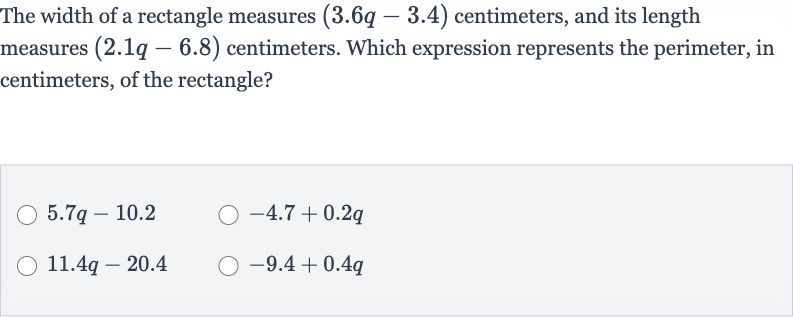Full solution
Q. The width of a rectangle measures centimeters, and its length measures centimeters. Which expression represents the perimeter, in centimeters, of the rectangle?
- Perimeter Formula: To find the perimeter of a rectangle, we need to add together the lengths of all four sides. The formula for the perimeter of a rectangle is .
- Calculate Sum: First, we calculate the sum of the width and the length: \(3.q - .) + (.q - .)\.
- Combine Like Terms: Perform the addition by combining like terms: and . So, the sum of the width and the length is .
- Apply Perimeter Formula: Now, we apply the perimeter formula: .
- Multiply Terms by : Multiply each term inside the parentheses by : and .
- Combine Results: Combine the results to get the expression for the perimeter: .
More problems from Volume of cubes and rectangular prisms: word problems
QuestionGet tutor help
QuestionGet tutor help
QuestionGet tutor help
QuestionGet tutor help
QuestionGet tutor help
QuestionGet tutor help
QuestionGet tutor help
QuestionGet tutor help
QuestionGet tutor help

